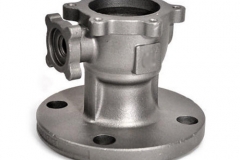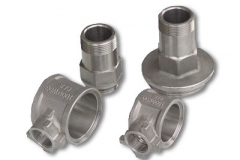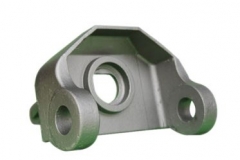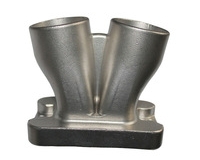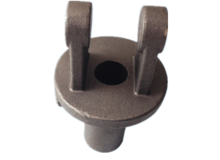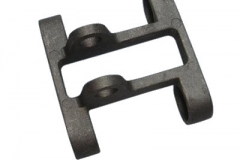Carbon Steel Casting and Low-Alloy Steel Casting
What Is Carbon Steel?
Carbon steel is one of main materials in steel casting industry. According to the carbon contents, carbon steels are classified as three types:
Low-carbon steels(< 0.20% C): A range of tensile properties are provided by heat treatment, and may be hardened to provide high surface hardness with abrasion resistance and good core ductility.
Medium-carbon steels(0.20 to 0.50% C): This grade makes it more durable, pliable and stronger. A range of tensile strengths are possible, with good ductility and impact resistance, easy to for secondary machining in a softened state.
High-carbon steels(> 0.50% C): High strength, good shape memory, is a particularly good option for spring manufacturers. This alloy steel for high strength applications is subject to wear and abrasion and is also suitable for heavy duty applications.
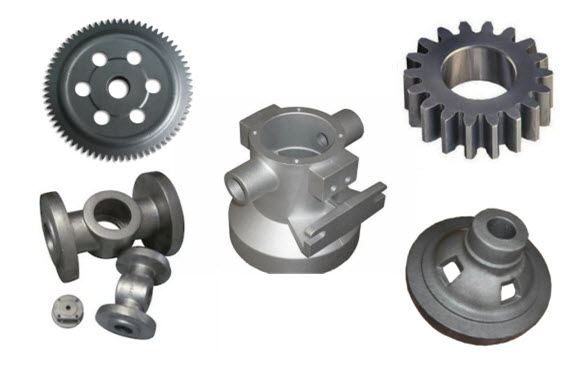
What Is Low-Alloy Steel?
Low-alloy steels contain specified amounts of chromium, nickel or molybdenum to the carbon to enhance harden-ability and toughness. Low-alloy steels are most commonly used for components in the oil and gas, and pump and valve industries, but are also suitable for military vehicles and earth-moving and construction equipment. Common elements added carbon steels are Nickel (Ni), Chromium (Cr) and Molybdenum (Mo). Nickel is added to resist corrosion and provide strength, stability and toughness. Chromium is added to resist wear and corrosion and help the steel to increase strength and harden-ability. Molybdenum is added to withstand temperatures and elevate the strength and harden-ability of the steel.
How are Carbon Steel Castings and Low-Alloy Steel Castings Made?
Carbon steel casting parts and alloy steel casting parts could be produced either by Water Glass Investment Casting or Silica Sol Investment Casting.
Water Glass Investment Casting: carbon steel castings with tolerance CT7-CT8. Most of carbon steel castings use water glass casting process for its low cost.
Silica Sol Investment Casting: It is a lost wax casting method. This casting process can control carbon steel castings within tolerance CT5-6. Better surface finish.
Advantages of Carbon Steel Casting and Low-Alloy Steel Casting
- Low material cost
- Many material grades
- Support for vast range of industries & applications
- High structural integrity
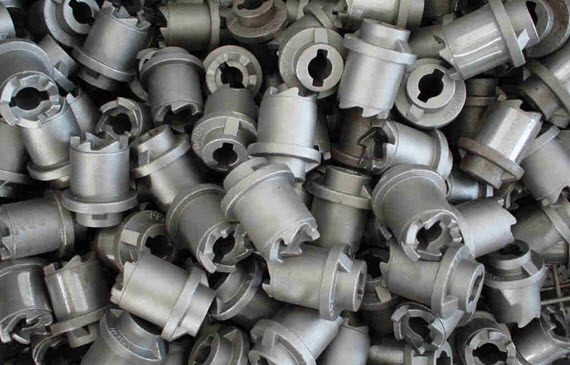
| Material | Grade | Common Application |
|---|---|---|
| Carbon Steel | 1000 Series | The 1000 series carbon steel is relatively soft compared to other carbon steels and tends to deform rather than break when stressed too much. In the industry, they are usually used to make cranks, handles and braces. |
| 4100 Series | 4100 series carbon steel is very high strength and often used for parts that are not allowed to deform. They are commonly used to make firearm components and ratchets | |
| 8600 Series | The mechanical properties of the 8600 Series carbon steel are between the 4100 and 1000 series. The 8600 series is weaker than 4100 but will not break before bending. In the industry, they are commonly used to make firearm parts, housings, and nozzles. |
Secondary Operations of Carbon Steel Castings and Low-Alloy Steel Castings We Offer
- High precision machining
- Heat treatment
Carbon Steel Casting Parts and Low-Alloy Steel Casting Parts
Sources
- American Foundry Society. “Metal Casting”
- Wikipedia. “Investment Casting“, “Sand Casting“
- efunda. “Sand Casting“
- The Investment Casting Institute. “What is Investment Casting?“
- The Library of Manufacturing. “Investment Casting“
- Forging Industry Association “Forging Industry“
Our Internal Resources for Die Casting, Investment casting, Forging and Sand Casting
- Die Casting
- Aluminum Die Casting
- Zinc Die Casting
- A356 Aluminum Casting with T6 Heat Treatment
- Magnesium Die Casting
- Investment Casting
- Stainless Steel Casting
- Duplex Stainless Steel Casting
- Super Duplex Stainless Steel Casting
- Titanium Casting
- Carbon & Low Alloy Casting
- Forging
- Cold Forging
- Hot Forging
- ECO BRASS C69300 Brass Forging
- Sand Casting (Aluminum Sand Casting, Ductile Iron Sand Casting, Gray Iron Sand Casting)
- Specialty Fittings and Fasteners
- Precision CNC Machining and Secondary Operations

